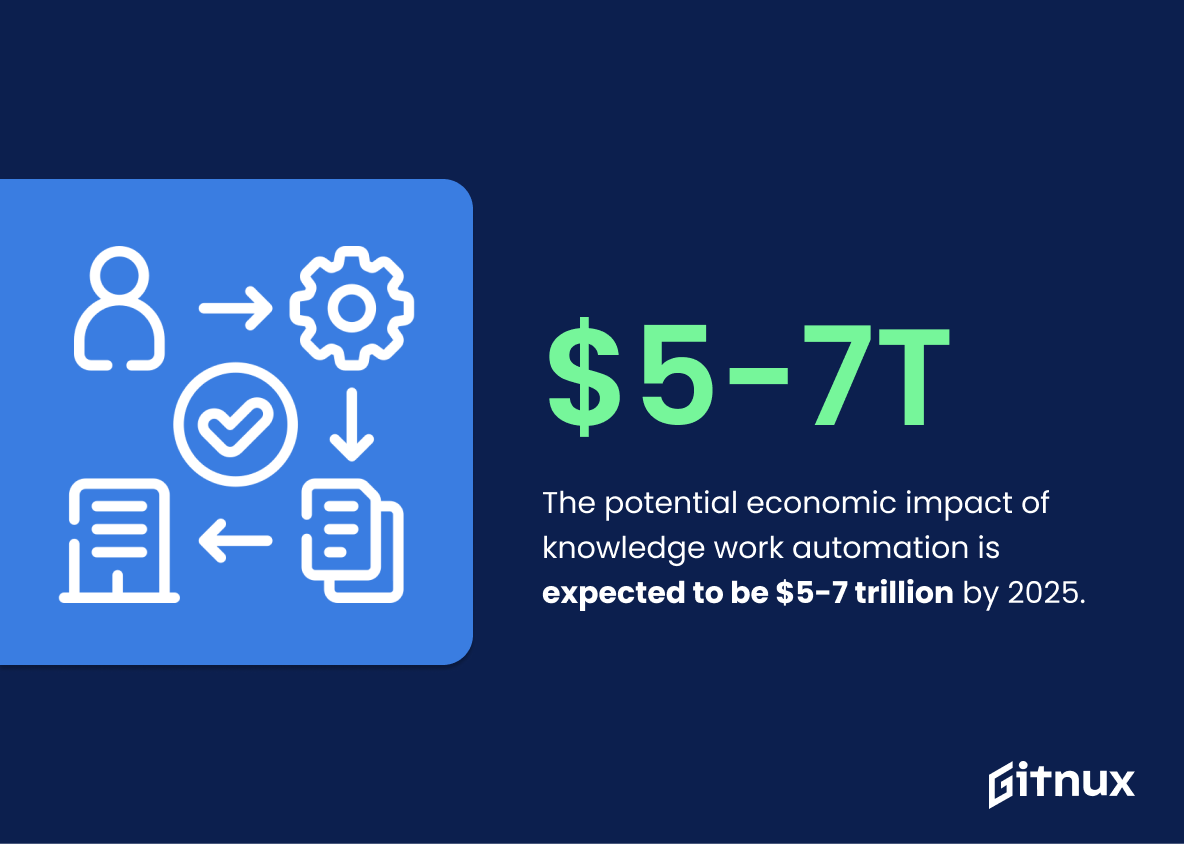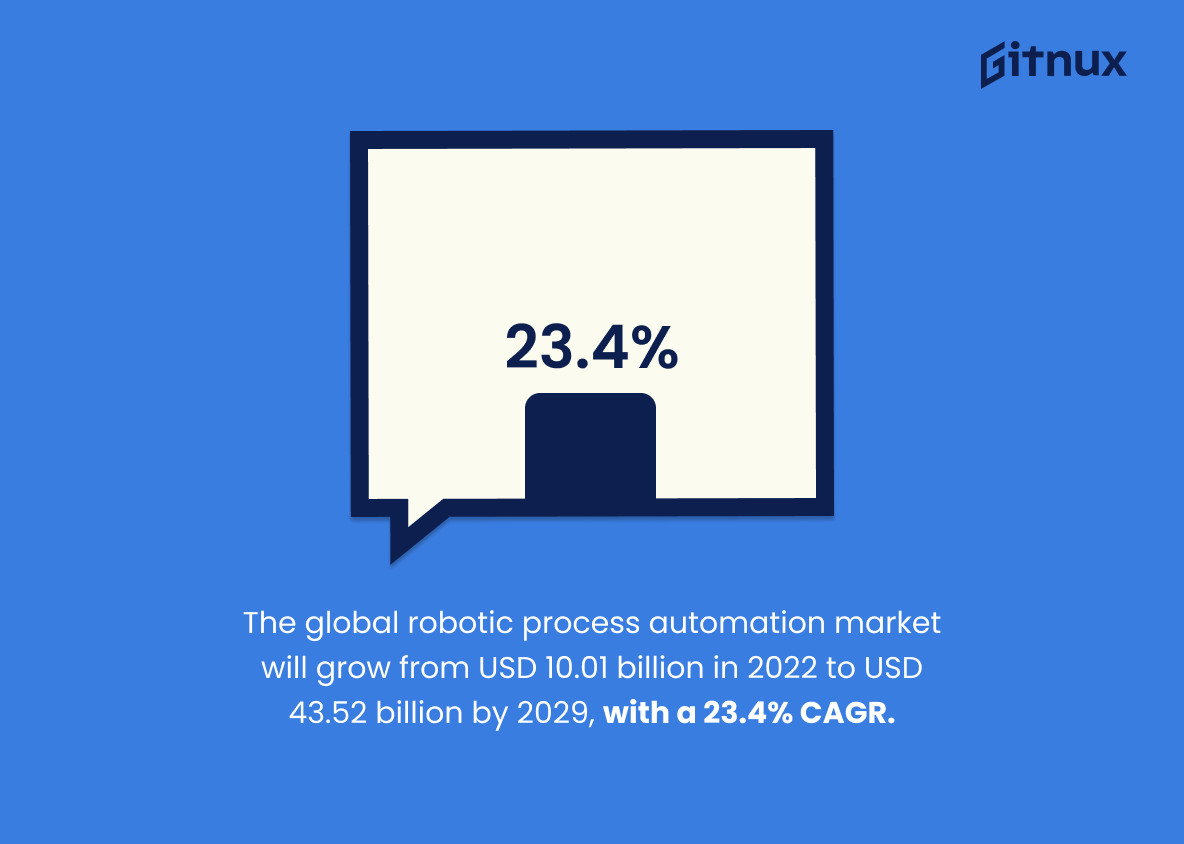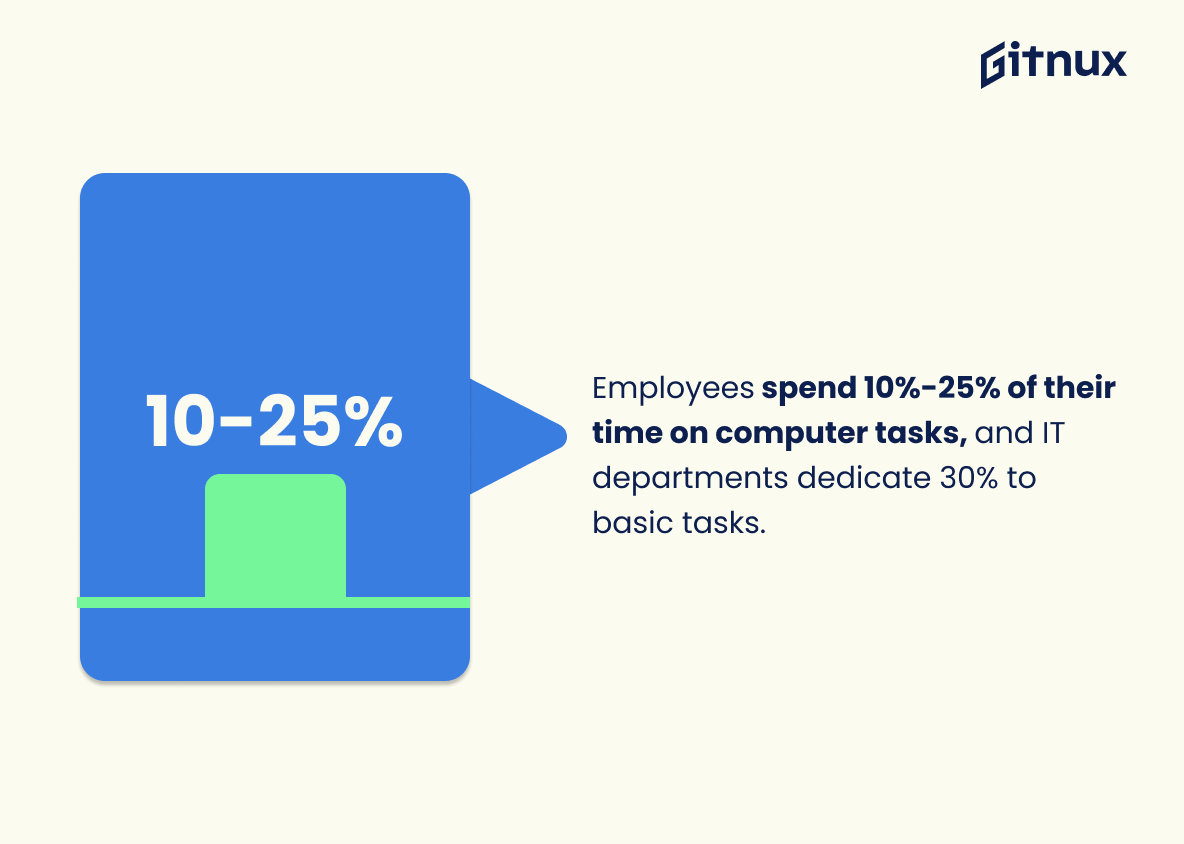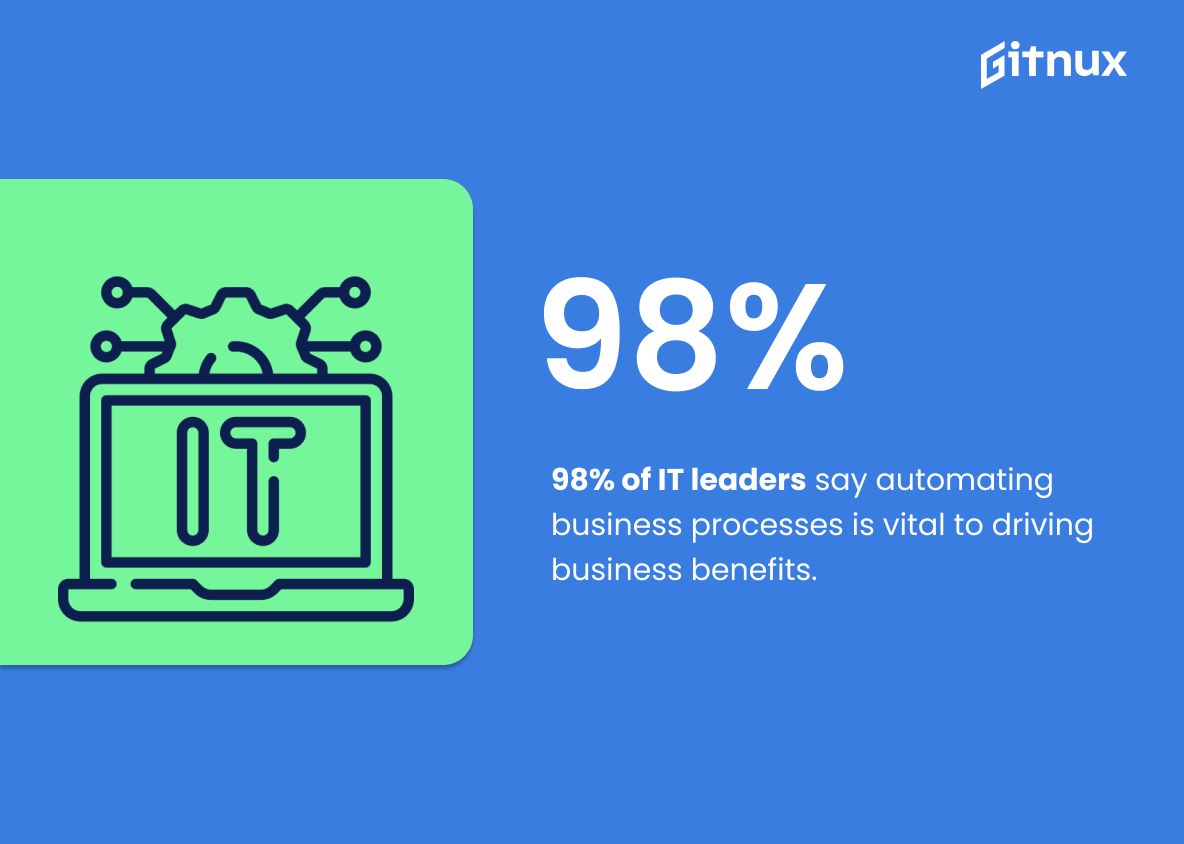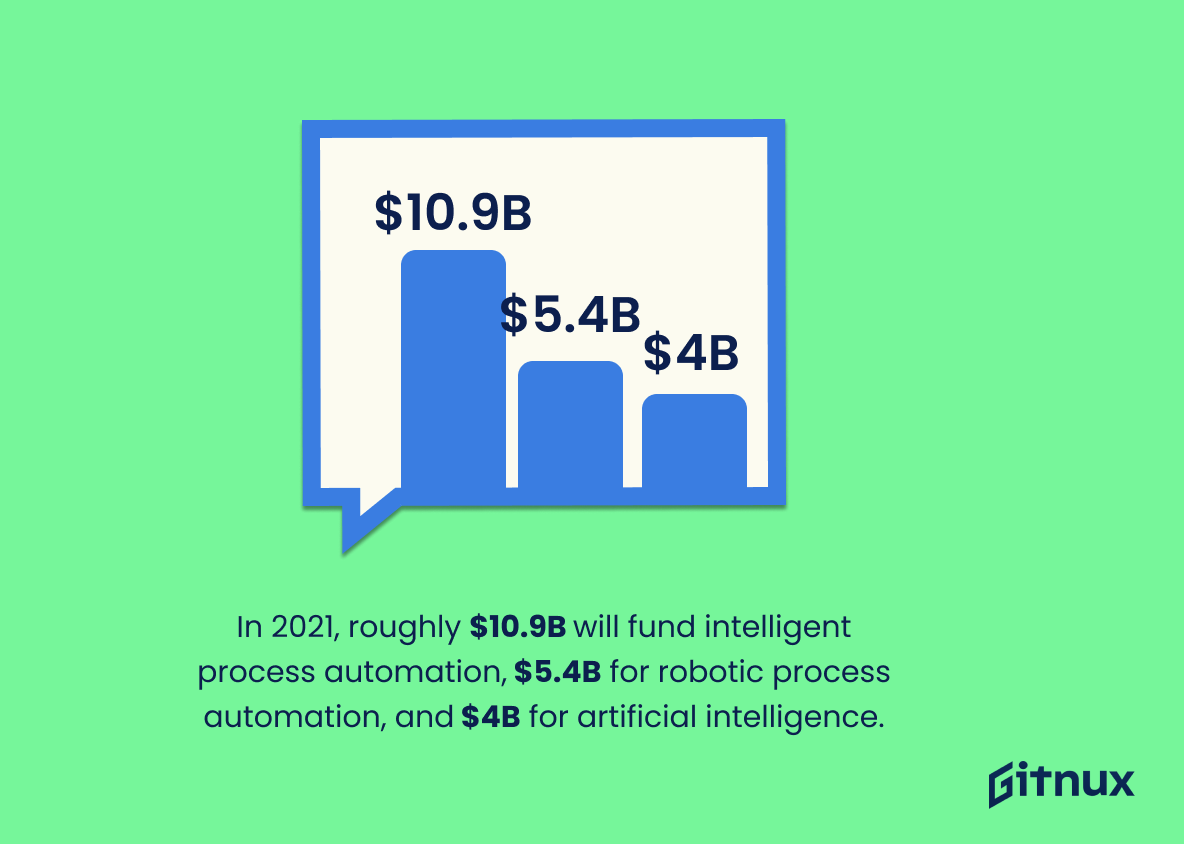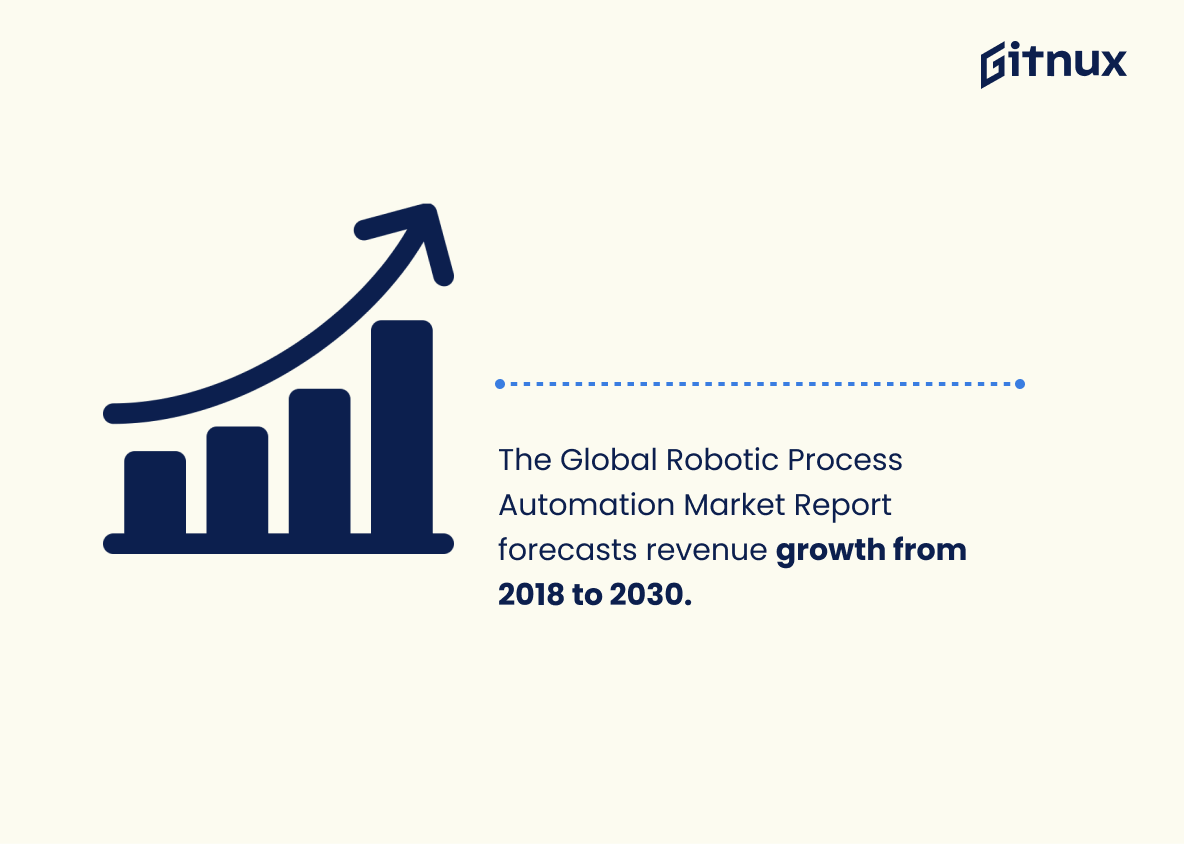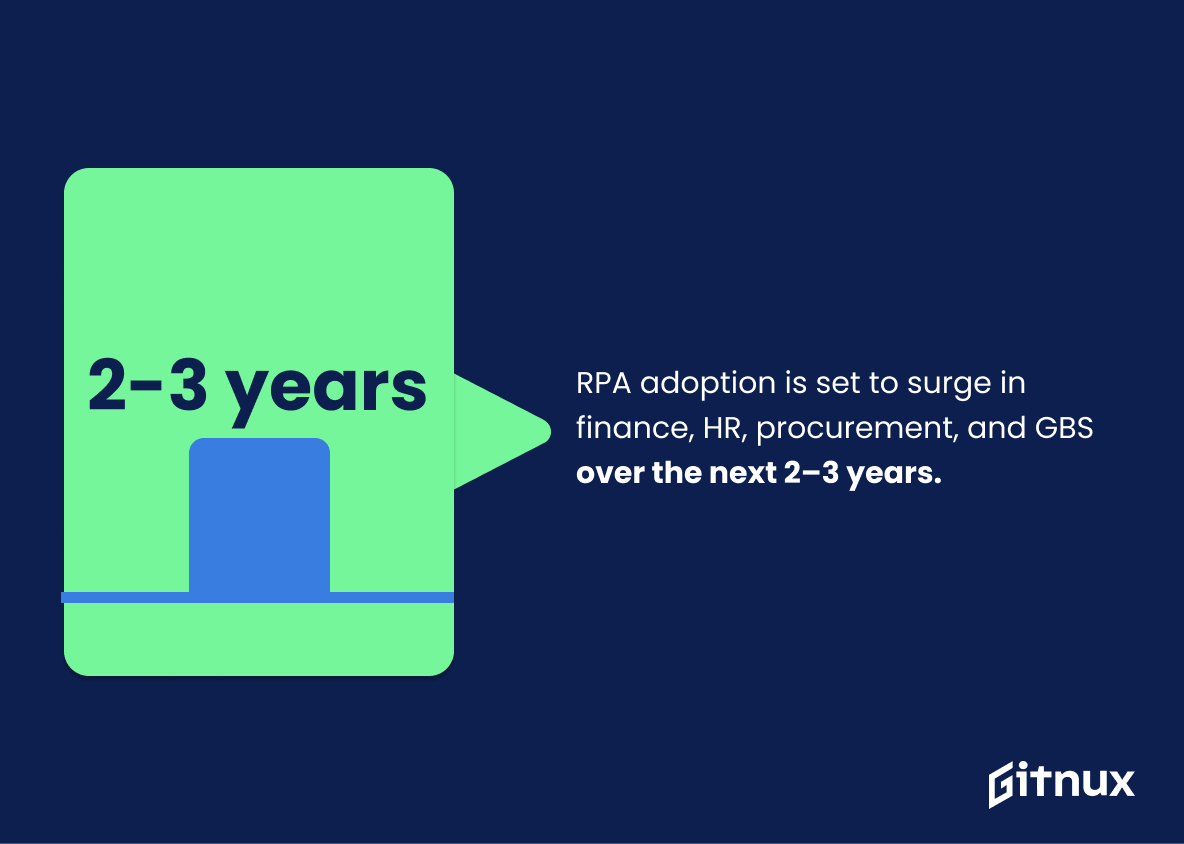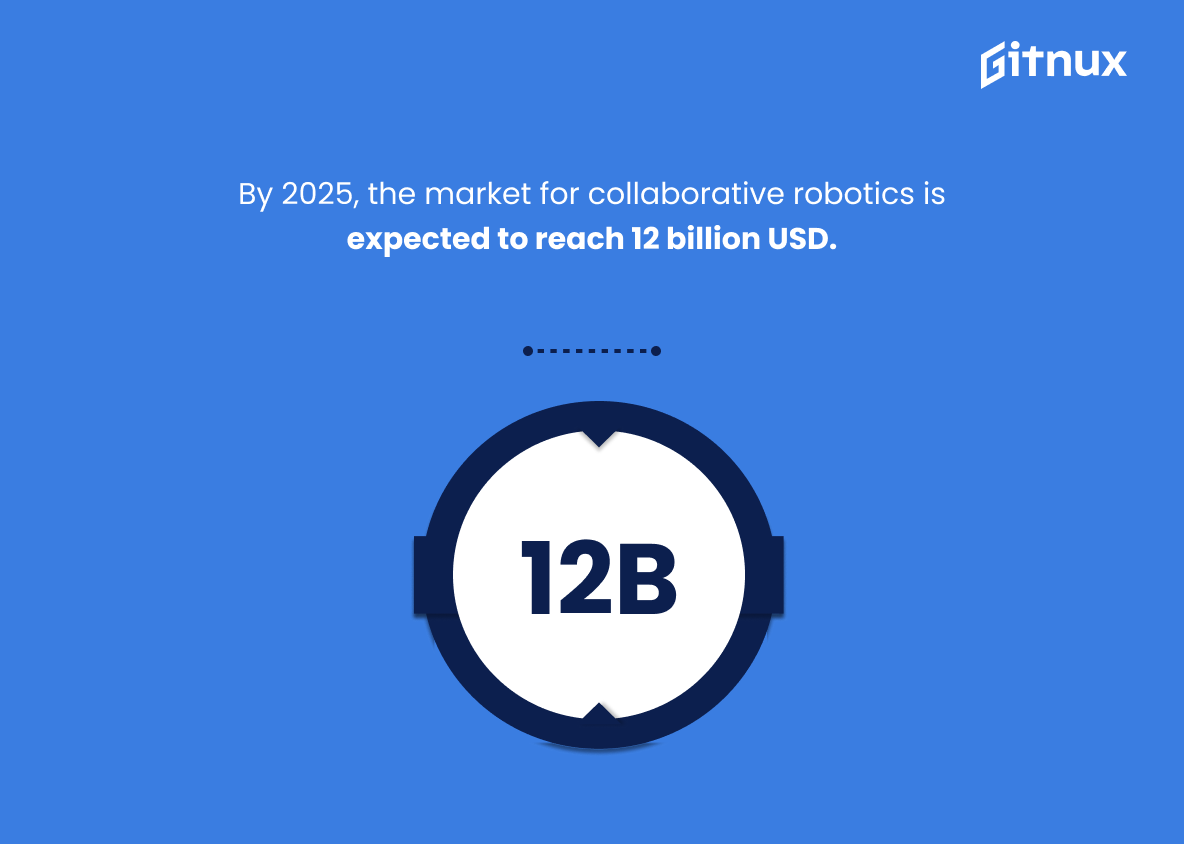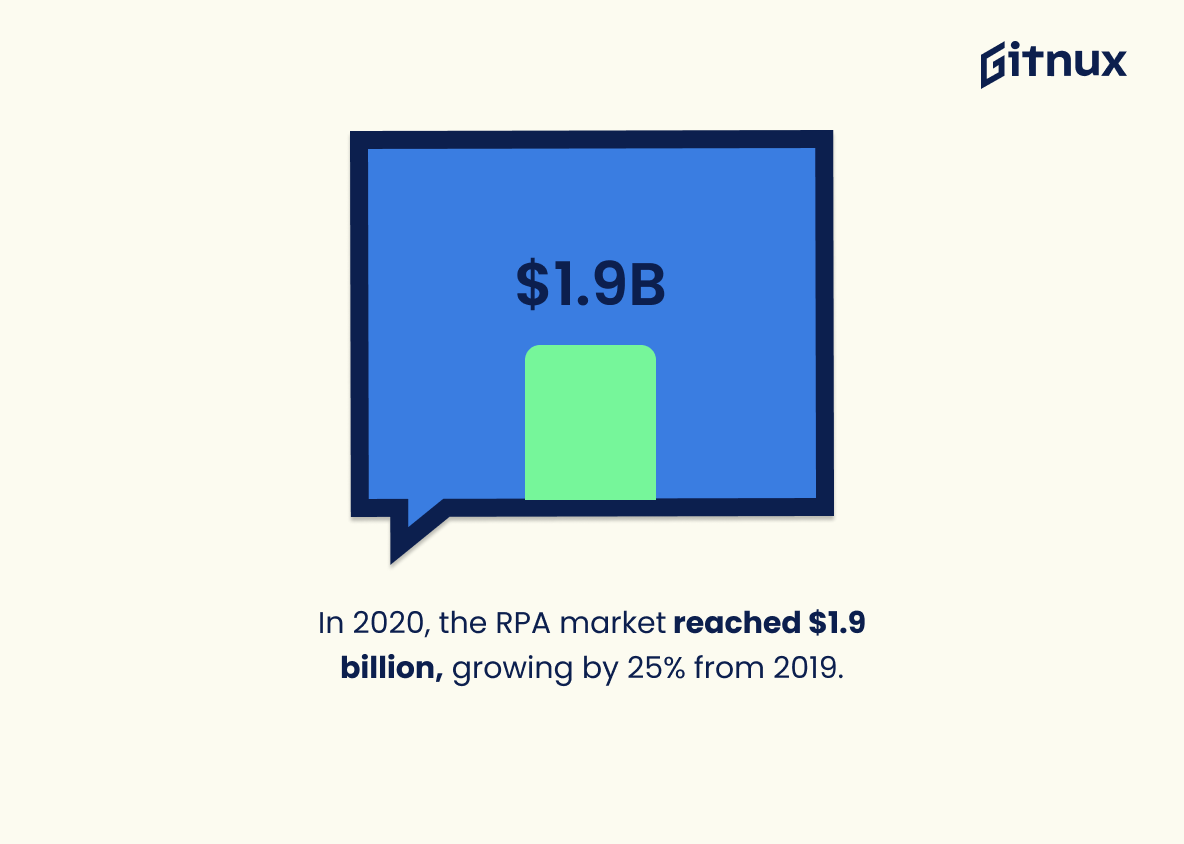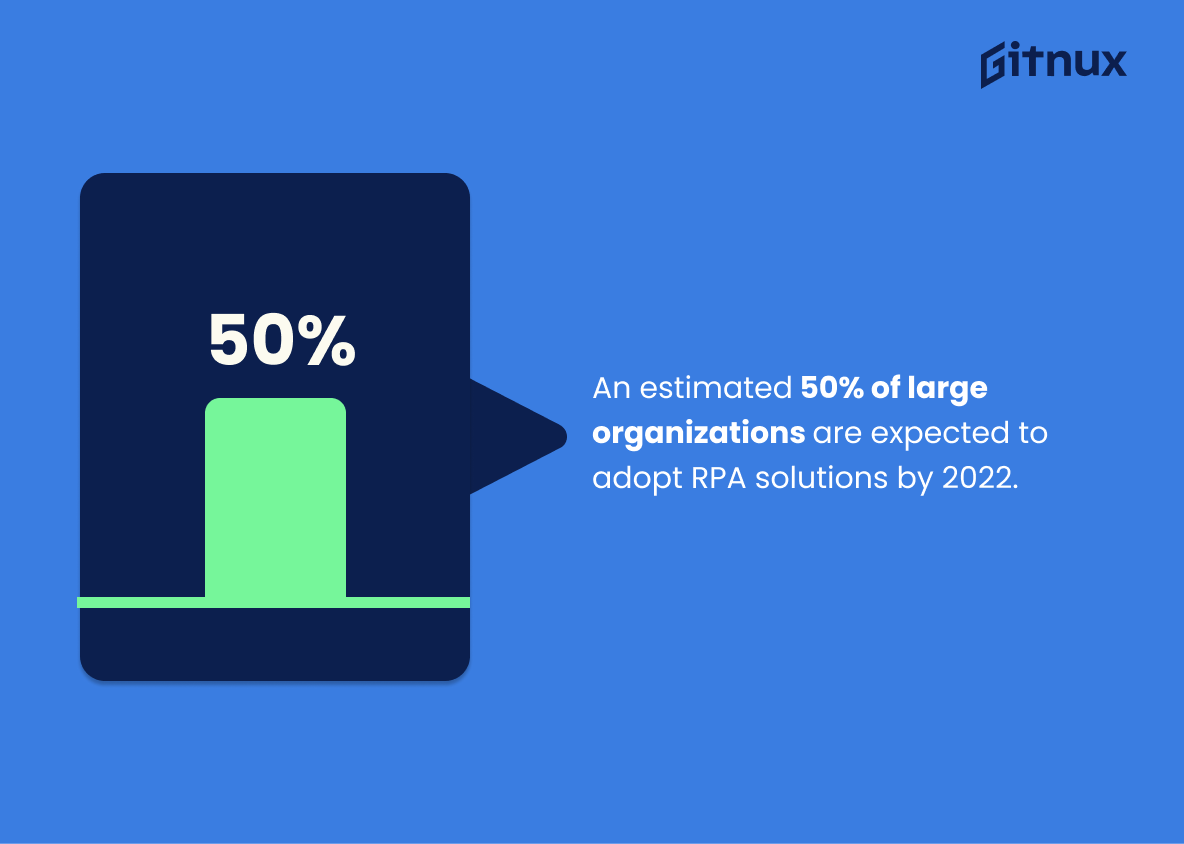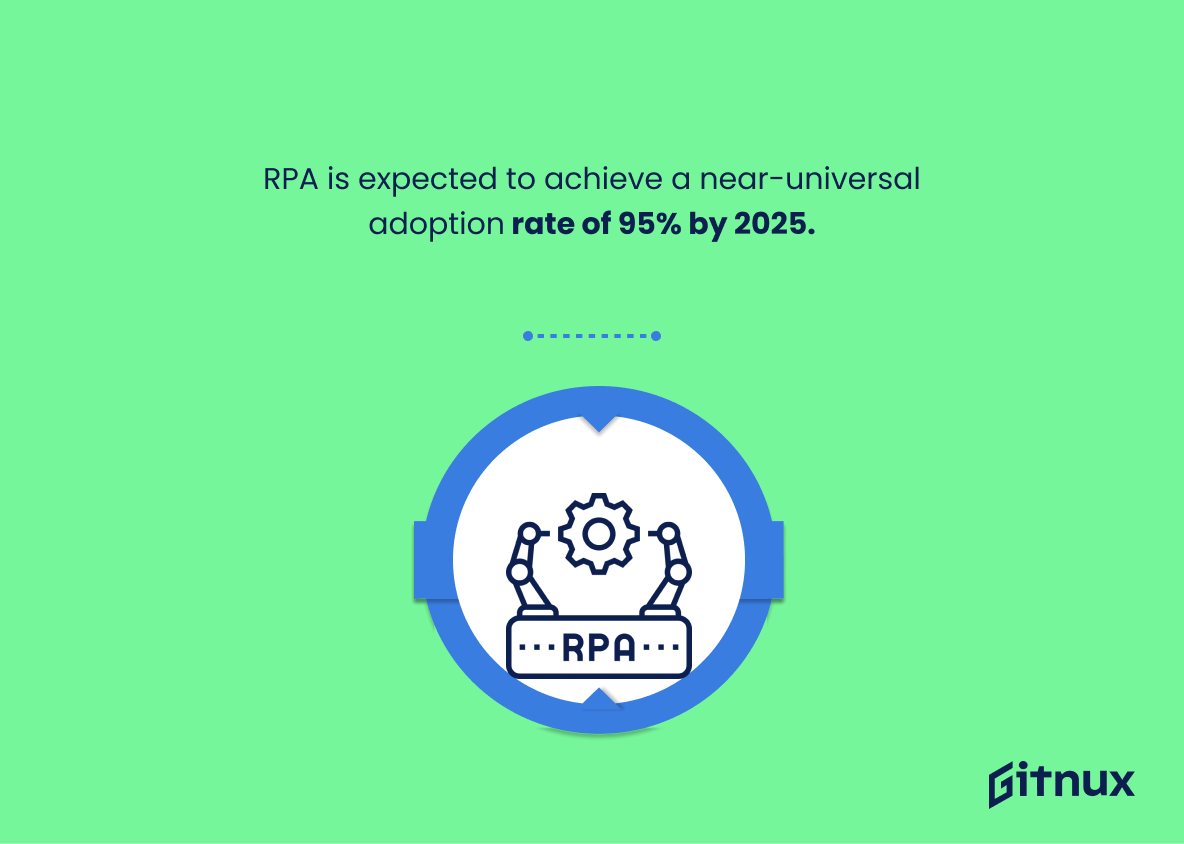Robotic process automation (RPA) is a rapidly growing technology that is transforming the way businesses operate. It is a form of automation that uses software robots to automate manual, repetitive tasks. RPA is quickly becoming a popular choice for businesses looking to streamline their operations and increase efficiency.
As technology continues to evolve, it is important to stay up to date on the latest robotic process automation statistics. In this blog post, we will explore the latest RPA statistics and discuss how businesses can use this information to their advantage.
Robotic Process Automation: The Most Important Statistics
98% of IT leaders say automating business processes is vital to driving business benefits.
81% of companies are investing in robotic process automation technology to achieve their financial saving goals.
Robotic Process Automation: Statistics Overview
The potential economic impact of knowledge work automation is expected to be 5-7 trillion USD by 2025.
This statistic demonstrates the potential of Robotic Process Automation (RPA) technology to become a major player in the global economy. It also highlights the need for businesses to invest in RPA technology in order to remain competitive and capitalize on the growth of the market. This information can also be used to inform strategic decisions and investments in RPA technology.
The global robotic process automation market size is expected to grow from USD 10.01 billion in 2022 to USD 43.52 billion by 2029 at a CAGR of 23.4%.
It shows the potential for growth in the robotic process automation market. This growth is likely to be driven by increased demand for automated processes, which can help businesses save time and money. Additionally, the high CAGR indicates that the market is likely to experience significant growth over the next several years, which could lead to more opportunities for businesses to benefit from robotic process automation.
81% of companies are investing in robotic process automation technology to achieve their financial saving goals.
Companies are increasingly recognizing the value of robotic process automation technology in achieving their financial goals. It demonstrates that organizations are investing in this technology to streamline their operations and reduce costs, which can ultimately lead to increased profitability. Additionally, this statistic provides insights into the growing trend of automation and its impact on businesses.
Employees spend 10%-25% of their time on repetitive computer tasks. IT departments spend 30% of their time on basic low-level tasks. Typical rules-based processes can be 70%-80% automated.
This statistic highlights the potential of RPA to reduce the amount of time and effort spent on repetitive and low-level tasks. By automating these tasks, employees can focus their attention on more complex and value-adding activities, while the IT department can free up its resources to pursue more strategic projects. Automating rules-based processes can also improve efficiency and accuracy, making the whole organization more productive.
Check out our latest Business Automation Statistics
Around 80% of finance leaders have implemented or are planning to implement RPA.
There is increasing recognition of the potential benefits of RPA, and the technology is becoming more widely accepted as a viable solution to streamline financial processes. This indicates that RPA is likely to become an increasingly important part of the finance industry in the future.
98% of IT leaders say automating business processes is vital to driving business benefits.
Automating processes with robotic process automation can reduce costs, increase efficiency and accuracy, and help organizations optimize their operations. Automating processes can also lead to increased customer satisfaction, improved compliance, and better business decision-making. By understanding the importance of robotic process automation, businesses can reap the rewards of improved operations and better customer experiences.
Read more about Data-Driven Decision-Making
In 2021, it is estimated that 10.9 billion USD will be spent on intelligent process automation (IPA), 5.4 billion on robotic process automation (RPA), and 4 billion on artificial intelligence (AI).
This information shows the current and projected spending on intelligent process automation, robotic process automation, and artificial intelligence. It can be used to inform decisions about investments in these technologies, as well as to track the growth of the industry.
See the best Artificial Intelligence Software
The Global Robotic Process Automation Market Report forecasts revenue growth from 2018 to 2030 and provides an analysis of the latest trends in each sub-segment based on type, deployment, organization, application, and region.
This statistic provides a comprehensive overview of the market, including the latest trends and revenue growth forecasts for the next decade. This data can be used to inform strategic decisions and investments in the industry.
RPA adoption is projected to increase significantly across finance, HR, procurement, and GBS in the next 2–3 years.
RPA is becoming increasingly popular across various functions and industries. This indicates that more organizations are recognizing the potential of RPA to streamline processes, reduce costs, and increase efficiency. This is important for organizations to understand in order to stay competitive in the market.
Adopting an intelligent approach to automating tasks with RPA bots can provide seven significant benefits to businesses. Robotic Process Automation (RPA) is a technology that enables businesses to automate manual, repetitive tasks. By adopting an intelligent approach to automating tasks with RPA bots, businesses can benefit in a number of ways, such as improved accuracy, increased efficiency, and reduced costs. This can help businesses save time and money, allowing them to focus on more important tasks.
By 2025, the market for collaborative robotics is expected to reach 12 billion USD.
It illustrates the growing demand for collaborative robotics, which are used to automate various processes in the manufacturing, logistics, and service industries. This increasing demand for collaborative robotics shows that businesses are recognizing the value of RPA and are investing in the technology to increase efficiency and reduce costs.
RPA has 5 disadvantages: attrition, sprawling technology, added complexity, magnification of problematic processes and thwarted transformation.
Knowing the disadvantages of RPA is important for businesses to understand the potential risks associated with implementing this technology. This knowledge can help businesses make informed decisions about whether to use RPA.
By 2024, the global Robotic Process Automation (RPA) market is expected to reach $13.74 billion.
RPA is becoming increasingly popular and is expected to be a major player in the industry by 2024. This indicates that businesses should start investing in RPA now to stay ahead of the competition and capitalize on the potential of this technology.
In 2020, the RPA market reached $1.9 billion, growing by 25% from 2019.
This highlights the increasing demand for RPA solutions and the potential for further growth in the coming years. This is an important indicator of the success of RPA technology and its potential to revolutionize the way businesses operate. It is a clear sign that RPA is here to stay and is becoming an increasingly important part of the modern business landscape.
The healthcare sector is expected to experience a CAGR of 36.9% in RPA implementation between 2021-2028.
The healthcare industry is embracing RPA technology and is expecting to see a significant growth in its implementation over the next seven years. This is an exciting development for healthcare providers, as RPA can help streamline processes, reduce costs, and improve patient care. It is also a sign that the healthcare sector is taking advantage of the many benefits that RPA can offer. This statistic is a testament to the potential of RPA in the healthcare industry and should be taken into consideration when discussing the future of RPA.
Roughly 80% of business leaders believe Robotic Process Automation will significantly impact their workforce by 2025.
The majority of business leaders recognize the potential of this technology and are preparing for its impact on their workforce. This statistic is a clear sign that Robotic Process Automation is here to stay and will have a major impact on the way businesses operate in the near future.
An estimated 50% of large organizations are expected to adopt RPA solutions by 2022.
More and more large organizations are recognizing the potential of RPA to streamline their operations and increase efficiency. This is a clear indication that RPA is becoming an increasingly important part of the business landscape and is here to stay.
RPA is expected to achieve a near-universal adoption rate of 95% by 2025.
By 2025, it is expected that nearly all businesses will have adopted RPA, indicating that it is becoming an essential tool for streamlining operations and increasing efficiency. This statistic is a clear indication that RPA is here to stay and will continue to be a major player in the business world.
By 2025, nearly 40% of global financial service providers will have implemented RPA technology.
The technology is being adopted at a rapid rate, and that it is becoming an integral part of the financial services industry. This is important because it demonstrates the potential of RPA to revolutionize the way financial services are delivered, making them more efficient and cost-effective. It also highlights the need for financial service providers to stay ahead of the curve and invest in RPA technology in order to remain competitive.
The top three industries to adopt RPA are financial services, manufacturing, and healthcare.
These industries are recognizing the potential of RPA to streamline processes and increase efficiency, and are taking steps to capitalize on the benefits of this technology. This statistic is a testament to the growing importance of RPA in the modern business landscape.
On average, RPA implementation projects have a cost of between $5,000 and $15,000.
This provides a clear indication of the financial investment required to get started with RPA, allowing businesses to make informed decisions about whether or not to pursue the technology. Furthermore, it can help businesses plan their budgets accordingly and ensure that they have the necessary resources to successfully implement RPA.
Nearly 34% of business leaders plan to spend more than $1 million on RPA by 2022.
RPA is becoming an increasingly important part of the business landscape, and that companies are willing to invest in it to improve their operations and increase their efficiency. This is a strong sign that RPA is here to stay and will continue to be an important part of the business world.
Approximately 53% of organizations worldwide have started to implement RPA technology.
More and more organizations are recognizing the potential of RPA to streamline their processes and increase efficiency. This is a clear indication that RPA is becoming an increasingly important part of the modern business landscape.
The global RPA market is expected to grow at a CAGR of 60% until 2025.
The RPA market is expected to experience tremendous growth in the coming years, indicating that more and more businesses are recognizing the value of RPA and investing in it. This is an important point to make in a blog post about RPA statistics, as it demonstrates the increasing popularity of RPA and its potential to revolutionize the way businesses operate.
RPA is expected to save businesses over $5 trillion in labor costs by 2025.
By 2025, RPA is projected to save businesses an incredible $5 trillion in labor costs, demonstrating the immense cost-saving potential of this technology. This statistic is a powerful reminder of the potential of RPA to revolutionize the way businesses operate and to create a more efficient and cost-effective future.
The adoption of RPA can lead to a reduction of 35-65% in an organization’s operational costs.
This statistic is a powerful testament to the potential of Robotic Process Automation (RPA) to revolutionize the way businesses operate. By drastically reducing operational costs, RPA can help organizations become more efficient and profitable. This statistic is a compelling argument for why businesses should consider investing in RPA technology.
By 2024, 90% of large and midsize organizations will have adopted a multi-vendor RPA approach.
Organizations are recognizing the potential of RPA to streamline processes, reduce costs, and improve efficiency. This is an important trend that should not be overlooked, as it could have a significant impact on the way businesses operate in the future.
In 2023, it is predicted that two-thirds of white-collar workers will interact with Robotic Process Automation tools.
In just a few short years, a majority of white-collar workers will be relying on these tools to help them with their daily tasks. This statistic is a clear sign that Robotic Process Automation is becoming an increasingly important part of the modern workplace, and it is a trend that is likely to continue in the future.
Conclusion
Robotic Process Automation (RPA) is a revolutionary technology that is transforming the way businesses operate. It is estimated that the global RPA market will reach $7.2 billion by 2024, with an annual growth rate of 25%. This technology is quickly becoming an essential tool for businesses to streamline their processes and increase efficiency.
With its potential for cost savings, improved accuracy, and faster turnaround times, it is no wonder that RPA is becoming increasingly popular. As businesses continue to embrace RPA, it is likely that the market will continue to grow and provide more opportunities for businesses to improve their operations.
References
1 – https://www.statista.com/statistics/740440/worldwide-robotic-process-automation-market-size/
2 – https://www.globenewswire.com/en/news-release/2022/09/27/2523189/0/en/Robotic-Process-Automation-Market-Size-2022-2029-Worth-USD-43-52-Billion-Exhibiting-a-CAGR-of-23-4.html
3 – https://www.statista.com/statistics/740436/worldwide-robotic-process-automation-artificial-intelligence-spending-by-segment/
4 – https://www.grandviewresearch.com/industry-analysis/robotic-process-automation-rpa-market
5 – https://nanonets.com/blog/rpa-statistics-in-2022/
6 – https://www.kofax.com/learn/blog/benefits-of-rpa
7 – https://www.statista.com/statistics/1200112/adoption-of-advanced-robotics-in-manufacturing-by-main-country/
8 – https://www.techtarget.com/searchcio/feature/What-are-the-advantages-and-disadvantages-of-RPA
9 – https://www.linkedin.com/pulse/12-interesting-rpa-statistics-dhanashree-badhe/
10 – https://research.aimultiple.com/rpa-stats/
11 – https://technologyadvice.com
12 – https://technuter.com
13 – https://www.techaeris.com
14 – https://appian.com
15 – https://www.horsesforsources.com
16 – https://www.marketsandmarkets.com
17 – https://www.gartner.com
18 – https://www.businessinsider.com
19 – https://www.businesswire.com
20 – https://www.emergenresearch.com
21 – https://www.pwc.com
22 – https://www.ibm.com
23 – https://dzone.com
24 – https://www2.deloitte.com
ZipDo, cited June 2023: Robotic Process Automation Statistics
